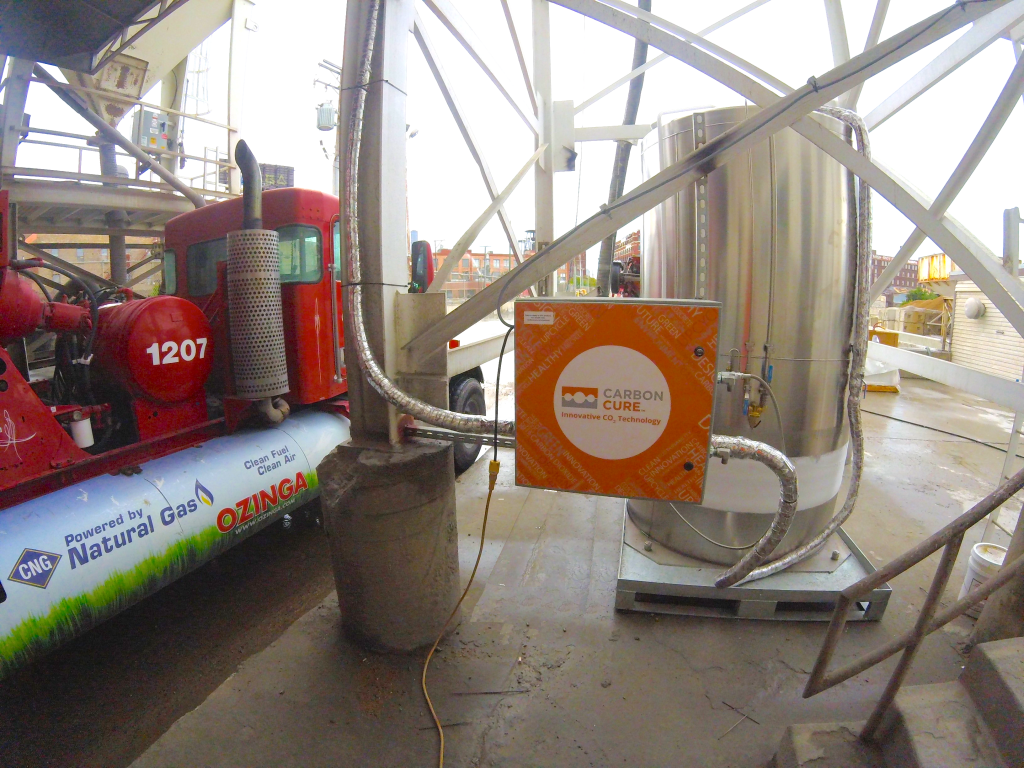
Pollution to products: CO2 competition enters final round
By ASSOCIATED PRESS
Industry Sustainability Energy Manufacturing carbon CO2 COSIA energy manufacturing Oil Sands oilsands XPrizeThe 10 finalists will collect $5 million in prize money, or $500,000 apiece.

Carbon Cure is making green concrete in Dartmouth, NS.
Photo: Carbon Cure
CHEYENNE, Wyo. — A $20 million international competition to make profitable products from a gas that otherwise would contribute to global warming has entered its final stretch.
The 10 finalists in the contest sponsored by a US energy company and a group of Canadian oil sands producers have shown in a lab they can use carbon dioxide from power plants to potentially turn a profit making everything from concrete to methanol, an alcohol used in a range of products.
The finalists – from India, China, Scotland, Canada and the US – will collect $5 million in prize money, or $500,000 apiece.
The teams also get the chance to put their ideas to work using much larger volumes of CO2 obtained from actual power plant emissions. The 1 metric ton of CO2 they will need to use daily is 10 times more than they had to demonstrate in a lab.
A ton is still only about 1% of a power plant’s daily output of CO2. But the competition is more about inspiring than immediate solutions to climate change, said Marcius Extavour, senior director of energy and resources for the XPRIZE Foundation organizing the contest.
“It’s about opening people’s minds and really demonstrating what is possible,” Extavour said.
Five of the finalists will compete to make use of actual flue gases from a Wyoming coal-fired power plant.The other five will compete at a gas-fired power plant in Alberta, Canada.
Starting this summer, they will have a year to practice at the plants before data collection for competition begins. The two winners, one at each site, will each collect a $7.5 million grand prize.
Chemistry is why the competition has two tracks. Carbon dioxide concentrations at the Wyoming Integrated Test Center, a new research facility at the Dry Fork Station coal-fired power plant near Gillette, are about double those at the Alberta Carbon Conversion Technology Centre, a new research facility at the Shepard Energy Centre gas-fired power plant in Calgary, Alberta.
The 10 finalists scored highest among 20 semifinalists on how much CO2 they could put to use, as well as the value of their products. Making concrete, for example, scores high on volume but not product value, while making relatively small amounts of pricey carbon fiber scores low on volume but high on value.
The finalists include C2CNT, a team from Ashburn, Va., making carbon nanotubes, and CarbonCure, of Dartmouth, Nova Scotia, Canada, which already has been using carbon dioxide on a commercial scale to chemically create limestone in concrete.
CarbonCure works with almost 100 concrete plants in the US and Canada but gets its CO2 from a variety of sources, said Jennifer Wagner, CarbonCure’s XPRIZE team leader.
“We know the technology works. We know there is an environmental benefit and an economic benefit to the concrete producers,” Wagner said. “What we need to show for the purposes of the XPRIZE is that technology can score the highest.”
Besides saving concrete producers money, the process can potentially reduce demand for cement from plants that are responsible for up to 5% of the world’s CO2 emissions, she said.
The competition is sponsored by NRG Energy and Canada’s Oil Sands Innovation Alliance. XPRIZE is an organizer of technological innovation contests including one that awarded $10 million for the first private organization to launch a manned spacecraft into space twice within two weeks.
FINALISTS
The NRG COSIA Carbon XPRIZE finalists were chosen from a field of 27 semifinalists by an independent judging panel of eight international energy, sustainability and CO2 experts. The competition is divided into two parallel tracks with five teams competing in each:
The Wyoming Track includes five teams that will demonstrate conversion of CO2 emissions at a coal-fired power plant in Gillette, WY:
Breathe (Bangalore, India) – Led by Dr. Sebastian Peter, the team is producing methanol, a common fuel and petrochemical feedstock, using a novel catalyst.
C4X (Suzhou, China) – Led by Dr. Wayne Song and Dr. Yuehui Li, the team is producing chemicals and bio-composite foamed plastics.
Carbon Capture Machine (Aberdeen, Scotland) – Led by Dr. Mohammed Imbabi, the team is producing solid carbonates with applications to building materials.
CarbonCure (Dartmouth, NS) – Led by Jennifer Wagner, the team is producing stronger, greener concrete.
Carbon Upcycling UCLA (Los Angeles) – Led by Dr. Gaurav Sant, the team is producing building materials that absorb CO2 during the production process to replace concrete.
The Alberta Track includes five teams that will demonstrate conversion of CO2 emissions at a natural gas-fired power plant in Alberta, Canada:
C2CNT (Ashburn, Va.) – Led by Dr. Stuart Licht, the team is producing carbon nanotubes.
Carbicrete (Montreal) – Led by Dr. Mehrdad Mahoutian, the team is producing cement-free, carbon-negative concrete that uses waste from steel production as an alternative to traditional cement.
Carbon Upcycling Technologies (Calgary) – Led by Apoorv Sinha, the team is producing enhanced graphitic nanoparticles and graphene derivatives with applications in polymers, concrete, epoxies, batteries and pharmaceuticals.
CERT (Toronto) – Led by Dr. Alex Ip of the Sargent Group at the University of Toronto, the team is producing building blocks of industrial chemicals
Newlight (Huntington Beach, Calif.) – Led by Mark Herrema, the team uses biological systems to produce bioplastics.
